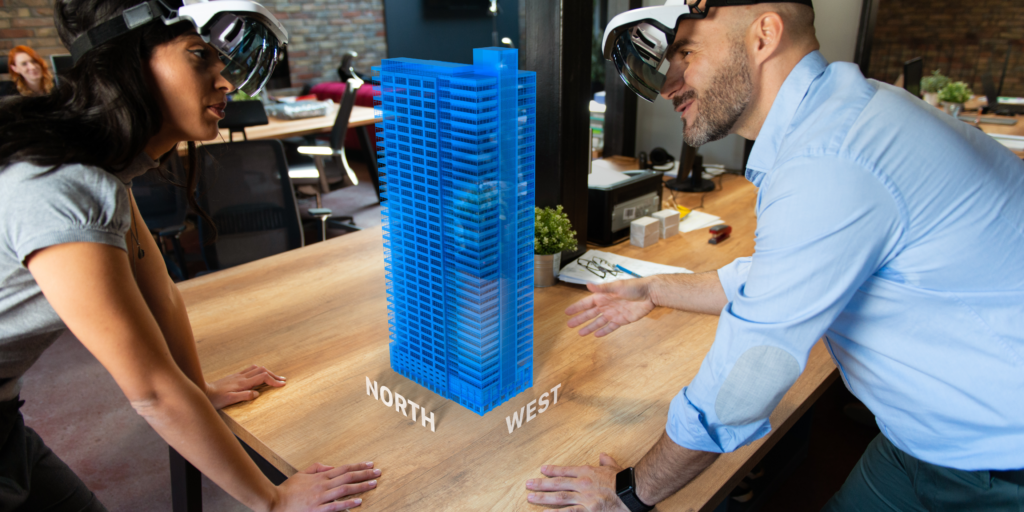The Power of AR: Transforming the eCommerce Experience

In today’s digital landscape, Augmented Reality (AR) has emerged as a game-changing technology for eCommerce businesses. By bridging the gap between virtual and physical shopping experiences, AR in eCommerce is revolutionizing the way customers interact with products online. From virtual try-ons to interactive product visualization, AR is redefining customer engagement and enhancing satisfaction.
The Rise of Augmented Reality in eCommerce
With global eCommerce sales projected to reach $7.5 trillion by 2025, brands are leveraging Augmented Reality shopping to stand out in a competitive market. This technology allows businesses to offer immersive experiences, helping customers make informed decisions. By integrating AR, eCommerce brands can reduce product returns, increase conversion rates, and build stronger customer loyalty.
Benefits of Augmented Reality for eCommerce
1. Enhanced Product Visualization
AR in eCommerce enables customers to visualize products in real-world settings. Whether it’s furniture, clothing, or makeup, AR tools like IKEA Place and Sephora Virtual Artist empower users to see how items will look and fit before making a purchase.
Key Benefits:
- Increases buyer confidence.
- Reduces the likelihood of returns.
- Offers a personalized shopping experience.
2. Interactive and Immersive Experiences
One of the greatest advantages of Augmented Reality shopping is its ability to create engaging and interactive customer journeys. AR tools allow users to interact with products in a way traditional eCommerce platforms cannot.
Example: Virtual try-ons for fashion and accessories let customers see how items will look on them, fostering a deeper emotional connection with the brand.
3. Higher Engagement and Conversion Rates
Studies show that AR experiences can boost conversion rates by up to 40%. By making the shopping process more enjoyable and interactive, brands can capture customer attention and drive more sales.
4. Better Customer Education
AR can help educate customers about complex products by providing 3D models and interactive demonstrations. For example, electronics and home appliance retailers use AR to show how products function, making it easier for customers to understand their features.
How to Integrate AR in Your eCommerce Business
1. Virtual Try-On Solutions
Virtual try-on solutions are perfect for industries like fashion, beauty, and eyewear. Brands like Warby Parker and MAC Cosmetics have successfully implemented AR tools to help customers visualize products on themselves.
2. Augmented Reality Product Previews
AR product previews allow customers to place virtual versions of products in their environments. For example, furniture retailers use AR to help customers see how a sofa or table would look in their living rooms.
3. Gamified Shopping Experiences
Gamification through AR can make shopping more engaging. Features like AR treasure hunts or interactive brand mascots can attract younger audiences and create memorable experiences.
The Technology Behind AR in eCommerce
AR Development Tools
- ARKit by Apple
- ARCore by Google
- Vuforia
These platforms enable businesses to build robust AR applications tailored to their needs.
AI Integration
AI-powered AR tools offer personalized experiences by analyzing customer preferences and behaviors. This combination ensures more relevant product recommendations and a seamless shopping journey.
Challenges and Solutions
1. Implementation Costs
AR technology requires investment in development and hardware. However, the long-term ROI outweighs the initial costs by improving customer retention and reducing returns.
2. Device Compatibility
Not all customers have access to AR-enabled devices. To address this, businesses can offer web-based AR solutions that work on most browsers without requiring additional downloads.
3. User Adoption
Educating customers about how to use AR features is essential. Clear instructions and intuitive interfaces can encourage adoption and ensure a positive experience.
The Future of AR in eCommerce
As technology advances, the role of Augmented Reality shopping will only grow. Emerging trends include:
- Haptic feedback technology for more immersive experiences.
- Integration with wearable devices like smart glasses.
- Real-time customization options using AR and AI.
Conclusion
The power of AR in eCommerce lies in its ability to merge the physical and digital worlds, creating a seamless and engaging shopping experience. For brands looking to stay ahead in 2025, integrating Augmented Reality shopping tools is no longer optional—it’s essential.
By leveraging AR for product visualization, virtual try-ons, and interactive customer engagement, businesses can boost conversions, reduce returns, and build lasting relationships with their customers. If you’re ready to transform your eCommerce experience, learn more about AR for your business here.






